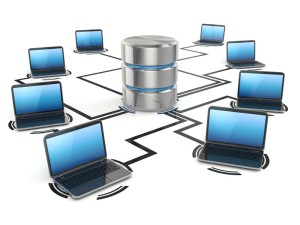
A managed IT help desk can deliver fast, effective IT services without the time and hassle of managing it internally.
As your business expands, the different technologies that your business uses is almost sure to grow. With that comes additional need for tech help, which leaves many businesses wondering whether they should hire in-house IT employees, or work with a company that offers managed solutions. The truth is that it really depends on your current business processes, budget, and the amount of tech help that you require. Most small businesses that are just starting to consider managed solutions are running into their first large-scale IT problems and want to be sure that they do not run into these issues again. For companies in those positions, a virtual managed IT help desk can be a great first stepping stone, particularly when the company also offers on-site solutions. There are many reasons why a managed service might be more beneficial for your business than other options that are available.
Lower Operating Costs
The biggest and most obvious benefit of virtual managed IT help desk is the lower operating costs that a business enjoys compared to bringing in their own guys in-house. Since you aren’t paying for full-time services (just sporadic full-time coverage as needed), you can expect to pay quite a bit less than a full salary would cost you. Another added benefit is the fact that managed IT teams have a wealth of experience in hiring dedicated IT talent. This means that you will have access to a higher level of talent at a lower price than you would expect to pay hiring out on your own.
Fast Response
Our IT teams have the systems in place to ensure that we are able to respond to all queries very quickly. When your company runs into IT issues, it could be costing you thousands of dollars while you wait for your IT team to fix the issue. A quick response time, even when using managed services ensures that you have peace of mind and feel adequately protected against all issues.
Industry Expertise
Trying to find IT talent ton your own when you have never hired IT talent previously can be difficult. There is a lot of technical jargon that your team will have to brush up on, and evaluating candidates when you have no internal IT talent can be incredibly difficult. One benefit of a virtualized IT help desk is the fact that you know that you can put faith in the managed solution to deliver exceptional talent at a greatly reduced rate than you would expect to pay in-house.
Systematic Approach
Having the right systems in place is important for delivering accurate, fast IT services. These systems would take weeks or months for a business with no previous experience to implement. But, managed solutions will already have these systems in place, giving you access to thousands of dollars in value just by signing up. This eliminates the learning curve that most businesses go through as they onboard new IT talent.
Proactive Measures
Another reason why many businesses choose managed services over bringing in their own talent is the fact that the managed services have strict measures in place regarding proactive measures. They help to keep It issues from popping up in their first place and have the processes in place to ensure that every client receives the same treatment.
If you are interested in virtual IT help desk services that can save your business time and money, please reach out and contact us today to schedule your first, risk-free consultation. We’ll take a look at your business, let you know how we can help you solve your IT problems, and recommend a plan that will help your business grow.


